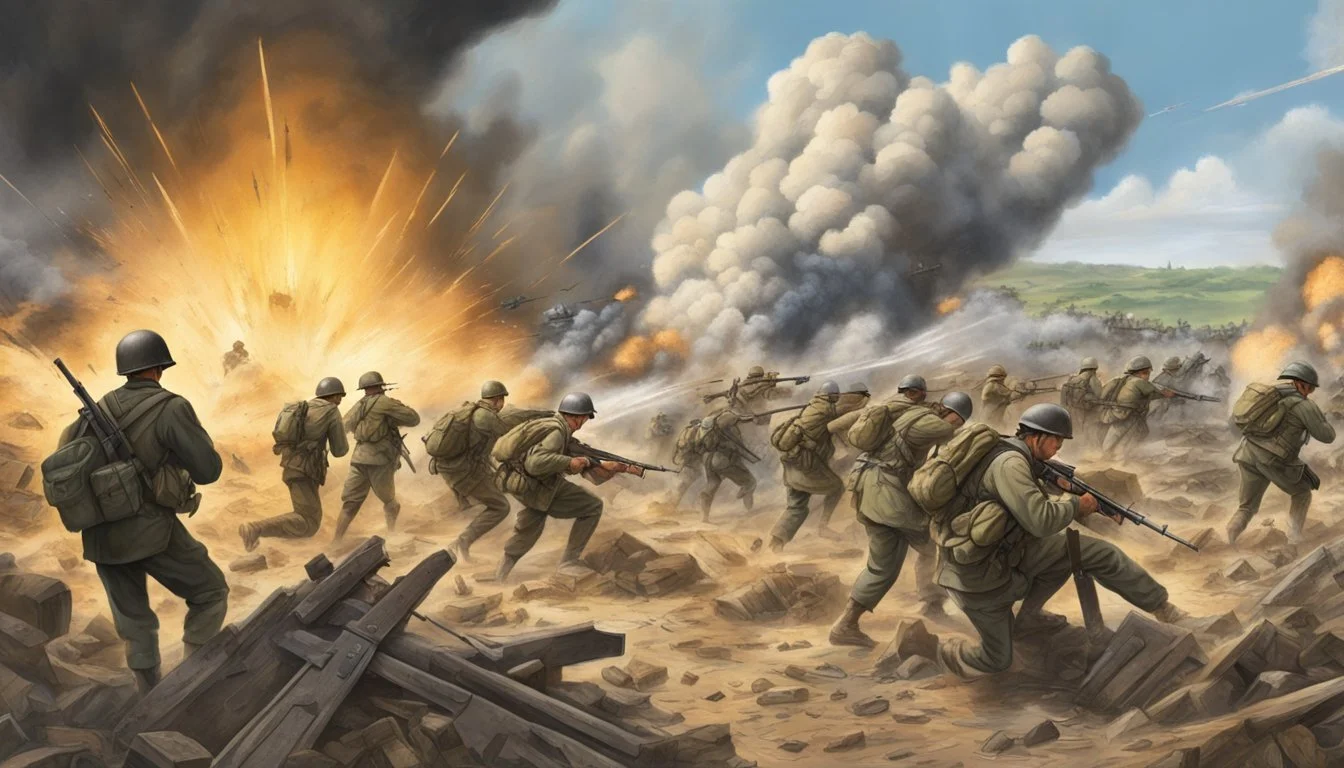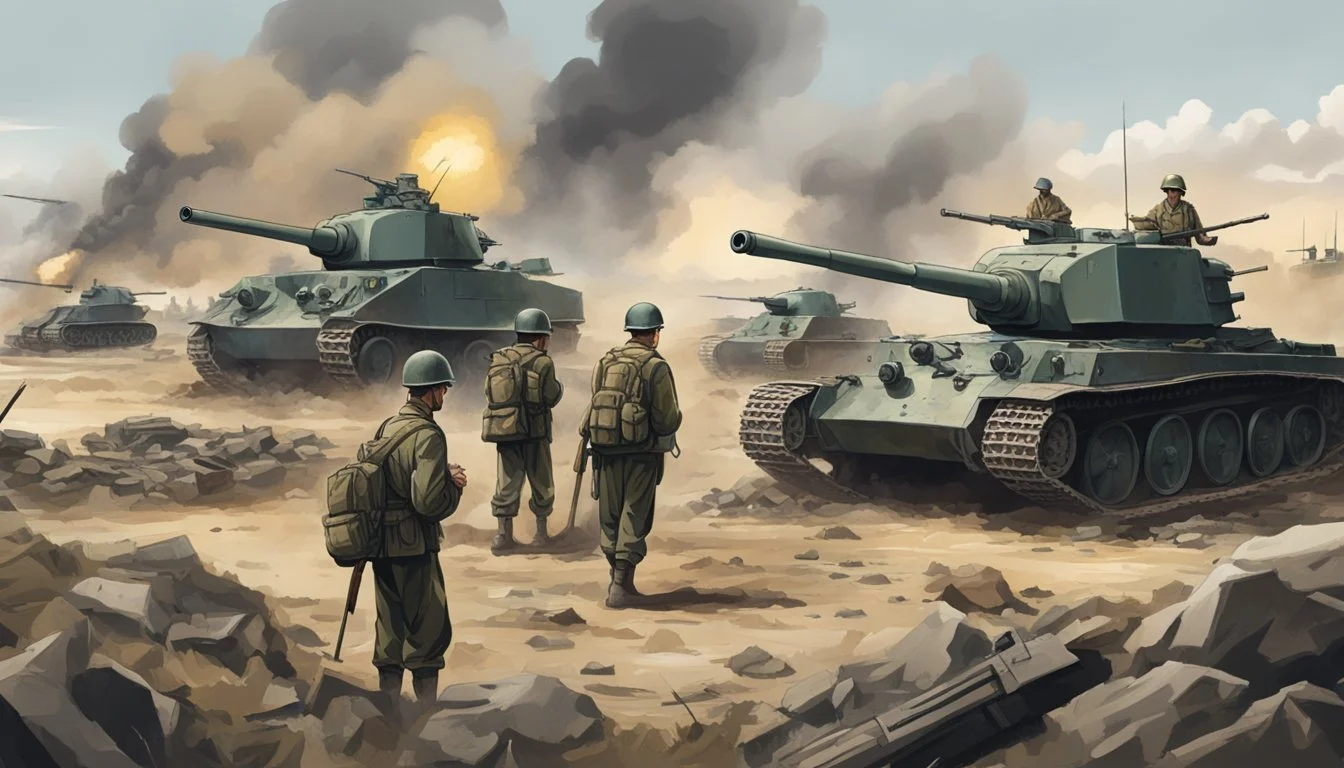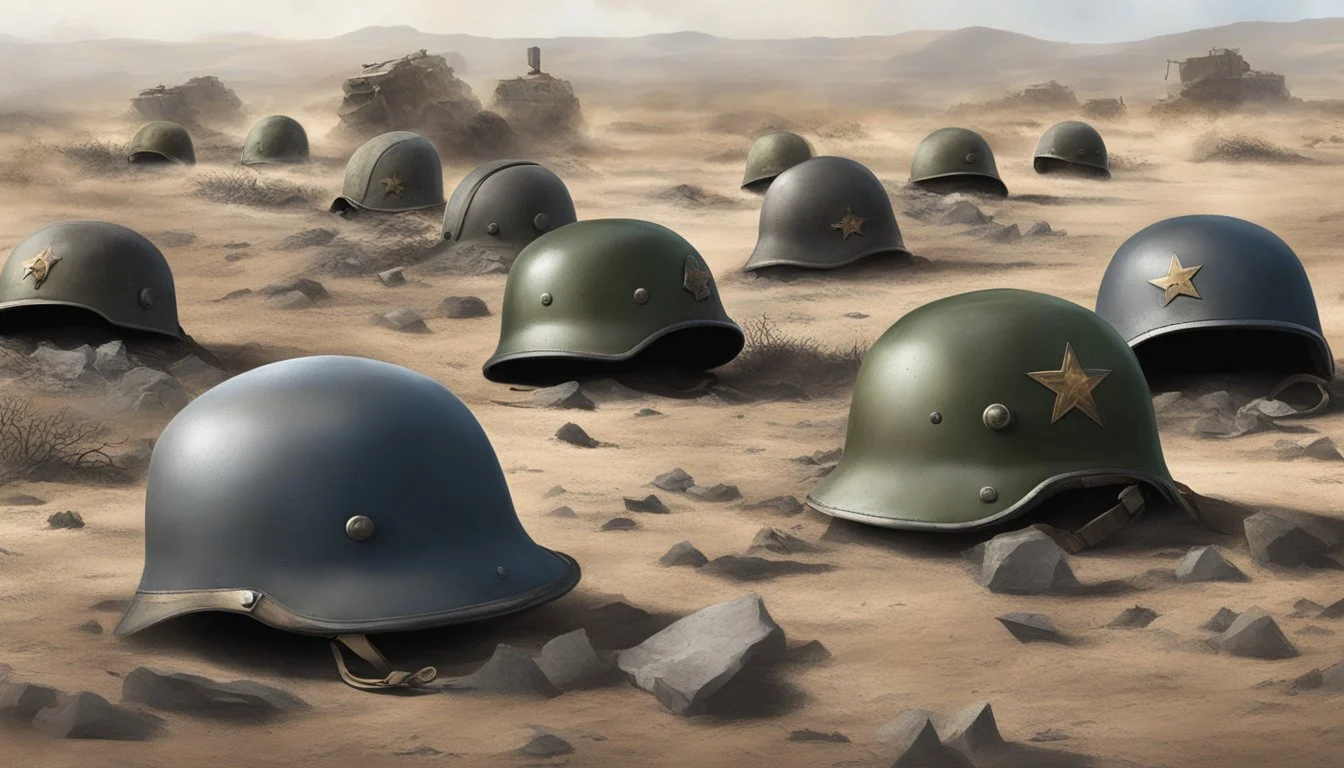The True Saving Private Ryan
The Niland Brothers' Remarkable WWII Story
The story of the Niland brothers from Tonawanda, New York, served as inspiration for Steven Spielberg's acclaimed 1998 film "Saving Private Ryan." Four brothers enlisted to serve in World War II, but only two would ultimately survive the conflict. Frederick "Fritz" Niland, the basis for Matt Damon's character Private Ryan, was believed to be the sole surviving brother for a time.
Their tale embodies the immense sacrifices made by countless families during the war. Preston and Robert Niland both perished during the D-Day invasion of Normandy. Edward was initially reported killed in action in Burma, though this information later proved incorrect. Upon learning of his brothers' fates, Fritz was sent home under the Sole Survivor Policy.
The Niland brothers' story highlights the devastating impact of war on individual families and communities. It also sheds light on military policies designed to prevent the loss of all male siblings in a single family. The brothers' experiences during World War II continue to resonate with audiences, reminding us of the personal costs behind historical events.
Historical Context of WWII
World War II was a global conflict that reshaped the geopolitical landscape. It involved major world powers and had far-reaching consequences that continue to impact the world today.
The Prelude to War
The seeds of World War II were sown in the aftermath of World War I. The harsh terms of the Treaty of Versailles left Germany economically crippled and resentful. This resentment fueled the rise of Adolf Hitler and the Nazi Party in the 1930s.
Hitler's aggressive expansionist policies led to the invasion of Poland on September 1, 1939. This action prompted Britain and France to declare war on Germany, marking the official start of World War II in Europe.
Meanwhile, Japan's imperialist ambitions in Asia led to conflicts with China and other nations. These tensions would eventually draw Japan into the global conflict.
The American Involvement
The United States initially maintained a policy of neutrality when World War II began in Europe. However, the country provided significant material support to Allied nations through programs like Lend-Lease.
The Japanese attack on Pearl Harbor on December 7, 1941, dramatically changed the situation. This surprise assault prompted the United States to declare war on Japan the following day.
Germany and Italy, as part of the Axis alliance with Japan, declared war on the United States on December 11, 1941. This action fully brought America into World War II, transforming it into a truly global conflict.
American involvement significantly altered the course of the war. The U.S. mobilized its vast industrial and military resources, contributing greatly to the Allied victory in both the European and Pacific theaters.
The Niland Brothers
The Niland brothers - Edward, Preston, Robert, and Fritz - were four American siblings from Tonawanda, New York who served in World War II. Their story of sacrifice and survival inspired the film "Saving Private Ryan."
Early Life and Enlistment
The Niland brothers grew up in a close-knit family near Buffalo, New York. Their parents, Michael and Augusta Niland, raised six children - the four boys and two daughters, Clarice and Augusta. The brothers came of age during the Great Depression and enlisted in the military as World War II escalated.
Edward joined the Army Air Forces. Preston and Robert both became paratroopers in the 101st Airborne Division. Fritz enlisted in the 4th Infantry Division. Their enlistments reflected a strong sense of patriotism and duty shared by many young American men of their generation.
Military Service
The Niland brothers saw action across different theaters of World War II. Edward served as a pilot in the Pacific. Preston parachuted into Normandy on D-Day with the 101st Airborne. Robert also jumped into France with the 82nd Airborne Division.
Fritz landed on Utah Beach with the 4th Infantry Division. Tragically, Edward was shot down over Burma in May 1944. Preston was killed on D-Day. Robert was reported missing in action and presumed dead. Only Fritz survived the Normandy invasion.
The U.S. military, learning of the three brothers' apparent deaths, ordered Fritz to return home under the Sole Survivor Policy. Fritz later learned that Robert had actually survived and was a prisoner of war. The brothers' story of sacrifice and survival became legendary.
The True Story Behind 'Saving Private Ryan'
Steven Spielberg's 1998 film "Saving Private Ryan" drew inspiration from real events during World War II. The movie's premise was based on the experiences of the Niland brothers, though it took creative liberties with the actual historical facts.
The Inspiration
The film's story was inspired by the Niland brothers from Tonawanda, New York. Edward, Preston, Robert, and Frederick Niland all served in the U.S. military during World War II. Their tale caught the attention of screenwriter Robert Rodat, who used it as a foundation for the movie's script.
The Niland brothers' story resonated with the themes of sacrifice and family that Spielberg wanted to explore in the film. It provided a compelling narrative framework for examining the human cost of war and the lengths to which the military would go to preserve families.
The Real Events
In reality, three of the four Niland brothers were initially believed to have died in combat within days of each other in June 1944. Edward was reported killed in the Pacific, Robert died on D-Day in Normandy, and Preston was declared missing in action in Burma.
Frederick, the youngest, parachuted into Normandy with the 101st Airborne Division. Upon learning of his brothers' fates, he was shipped back to the United States under the Sole Survivor Policy. This policy aimed to prevent families from losing all their sons in military service.
Comparison With the Film
While "Saving Private Ryan" drew on the Niland brothers' story, it significantly altered many details. The film portrays a mission to save one remaining brother, whereas in reality, Frederick Niland was sent home without a special rescue operation.
The movie's intense combat scenes, particularly the D-Day landing, were praised for their realism. However, the specific mission to find and extract Private Ryan was a fictional creation for dramatic effect.
Notably, Edward Niland was later found alive in a Japanese prisoner of war camp, unlike in the film where all brothers except the titular Ryan perish. The movie's emotional impact relied on the premise of a sole surviving son, which differed from the actual outcome for the Niland family.
Key Battles and Missions
The Niland brothers participated in several major World War II operations that shaped the course of the conflict in Europe. Their experiences spanned crucial Allied campaigns from the beaches of Normandy to airborne assaults across occupied territory.
D-Day and Normandy
On June 6, 1944, Allied forces launched the largest amphibious invasion in history. Robert Niland parachuted into Normandy with the 82nd Airborne Division, landing behind enemy lines hours before the beach landings. He fought to secure strategic objectives and disrupt German defenses.
Preston Niland landed on Utah Beach with the 4th Infantry Division. The division faced less resistance than expected and pushed inland, linking up with airborne units.
The brothers' units played key roles in establishing the Allied foothold in France. They fought through the dense hedgerow country of Normandy in the weeks following D-Day, gradually expanding the beachhead against determined German resistance.
Paratrooper Engagements
As paratroopers, Robert and Frederick Niland took part in several airborne operations. They participated in night drops behind enemy lines, often facing chaos and scattered landings.
Key engagements included:
Securing bridges and crossroads to prevent German counterattacks
Attacking enemy supply lines and communications
Linking up with advancing ground forces
The airborne troops faced some of the toughest fighting, often outnumbered and cut off from support. Their actions were crucial in disrupting German defenses and paving the way for Allied advances.
Operation Market Garden
In September 1944, Frederick Niland likely participated in Operation Market Garden as part of the 101st Airborne Division. This ambitious airborne assault aimed to secure bridges in the Netherlands and open a route into Germany.
Key elements of the operation:
Largest airborne operation in history
Sought to end the war by Christmas 1944
Initial success followed by eventual failure
Paratroopers fought intense urban battles to capture bridges. They held out against fierce German counterattacks for days while waiting for ground forces to link up. Though the operation ultimately fell short of its goals, it demonstrated the skill and determination of Allied airborne forces.
Fate of the Niland Brothers
The Niland brothers' wartime experiences resulted in tragedy for some and survival against the odds for others. Their story captivated the nation and inspired a cinematic masterpiece.
Casualties and Survivors
Edward Niland, a pilot in the Army Air Forces, was shot down over Burma in May 1944. Initially reported as killed in action, he was later discovered alive in a Japanese POW camp. Preston Niland died on Utah Beach during the D-Day invasion on June 6, 1944.
Robert Niland was killed in action on June 7, 1944, while serving with the 82nd Airborne Division near Neuville-au-Plain, France. Fritz Niland, the youngest brother, parachuted into Normandy with the 101st Airborne Division and survived the war.
After learning of his brothers' fates, Fritz was located by the Red Cross and sent home under the Sole Survivor Policy.
Aftermath for the Family
The Niland family suffered immense grief, believing they had lost three sons in quick succession. Augusta Niland, the brothers' mother, received telegrams informing her of Preston and Robert's deaths, as well as Edward's presumed death.
Fritz's return home brought a measure of solace to the grieving family. The discovery that Edward was alive in 1945 came as a shock and joy. Edward's liberation from the POW camp allowed for a bittersweet reunion.
The surviving Niland brothers faced the challenge of rebuilding their lives after the war. Fritz became a dentist, while Edward worked for the Veterans Administration. Their experiences left an indelible mark on their family and community.
Impact on Military Policy
The Niland brothers' story influenced military policies aimed at protecting families from losing all their sons in combat. This led to significant changes in how the U.S. military handled service members from the same family.
The Sole Survivor Policy
The U.S. War Department implemented the Sole Survivor Policy in 1942. This directive aimed to prevent families from losing all their children in military service. The policy allowed for the reassignment or discharge of service members if they became the sole surviving son or daughter in a family.
The Niland brothers' case highlighted the importance of this policy. When three of the brothers were believed dead, Fritz Niland was sent home under this directive. The policy continues to evolve, now covering various family situations beyond just siblings.
Today, the Sole Survivor Policy applies to:
Last surviving son/daughter
Sole surviving son/daughter
Family members killed in action or died in the line of duty
This policy has protected numerous families from experiencing total loss in wartime. It remains an important aspect of U.S. military regulations, balancing national service with family preservation.
Legacy and Remembrance
The Niland brothers' story has left a lasting impact on American military history and popular culture. Their sacrifice and service continue to be honored through various memorials and adaptations in media.
Honors and Memorials
The Niland brothers are commemorated at the National D-Day Memorial in Bedford, Virginia. A plaque there bears their names and tells their story. In their hometown of Tonawanda, New York, a memorial park was dedicated to the brothers in 2015.
The American Legion Post 205 in Tonawanda was renamed the Niland Brothers Post in 1946 to honor their service. Each year, the post holds a ceremony on Memorial Day to remember the brothers and other local veterans.
Fritz Niland's Purple Heart and other military decorations are displayed at the Niland Brothers Memorial Museum in Tonawanda. The museum also houses photographs, letters, and personal items from the brothers.
The Niland Brothers in Popular Culture
Steven Spielberg's 1998 film "Saving Private Ryan" drew inspiration from the Niland brothers' story. While the film's plot is fictional, it captures the spirit of the military's efforts to preserve families during World War II.
Several books have been written about the Niland brothers, including "The True Story of the Niland Brothers" by Stephen E. Ambrose. These works provide detailed accounts of their service and the impact on their family.
A 2019 documentary, "The Real Saving Private Ryan," explored the similarities between the Niland brothers' experiences and the film's narrative. It featured interviews with military historians and relatives of the Niland family.
The brothers' story is often included in World War II exhibitions and educational programs, serving as a powerful example of family sacrifice during wartime.
Reflections on Heroism and Sacrifice
The story of the Niland brothers exemplifies the profound sacrifices made by countless families during World War II. Their experiences shed light on the immense personal costs of war and the depths of human courage.
The U.S. War Department's directive to prevent families from losing all their sons in combat reflects a recognition of the devastating impact such losses could have. This policy aimed to balance the needs of the military with the preservation of family lineages.
Fritz Niland's return home, while his brothers were presumed lost, highlights the complex emotions many soldiers faced. Survivor's guilt, relief, and a sense of duty to honor fallen comrades were common among those who made it back.
The Niland brothers' story inspired Spielberg's "Saving Private Ryan," which brought these themes to a wider audience. The film's depiction of heroism and sacrifice resonated with viewers, reminding them of the real human stories behind historical events.
Their tale serves as a poignant reminder of the countless acts of bravery and selflessness that occurred during the war. It underscores the importance of remembering and honoring those who gave their lives in service to their country.






